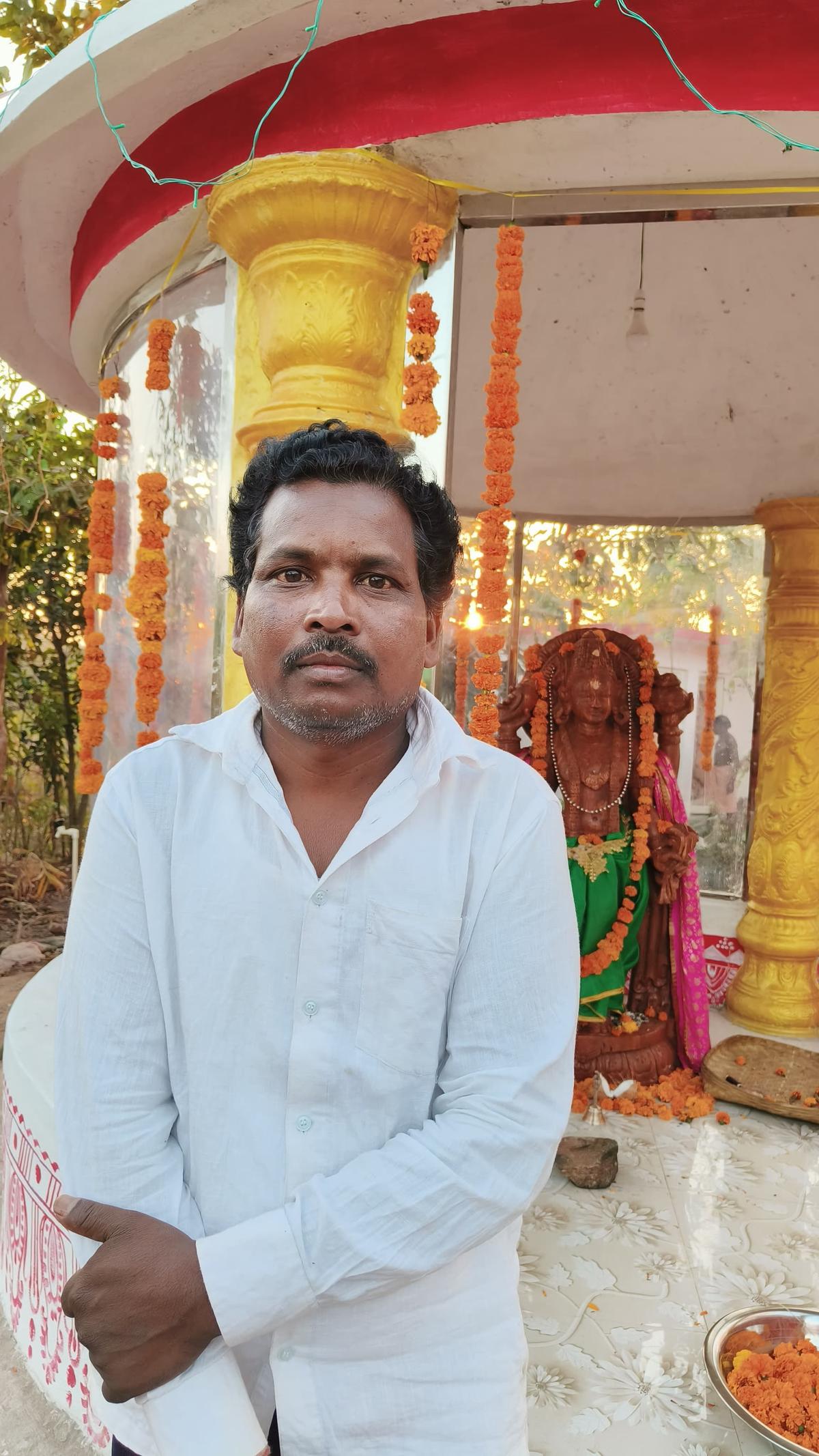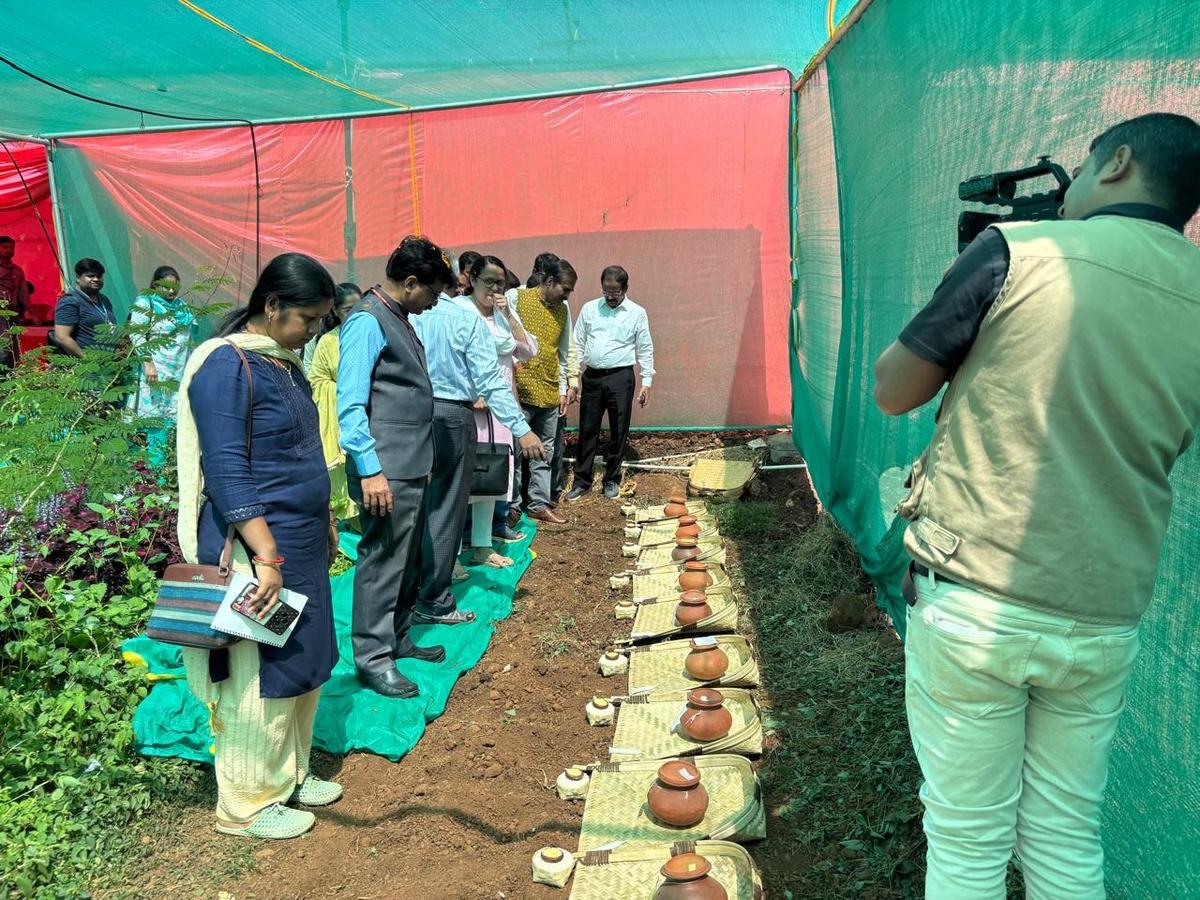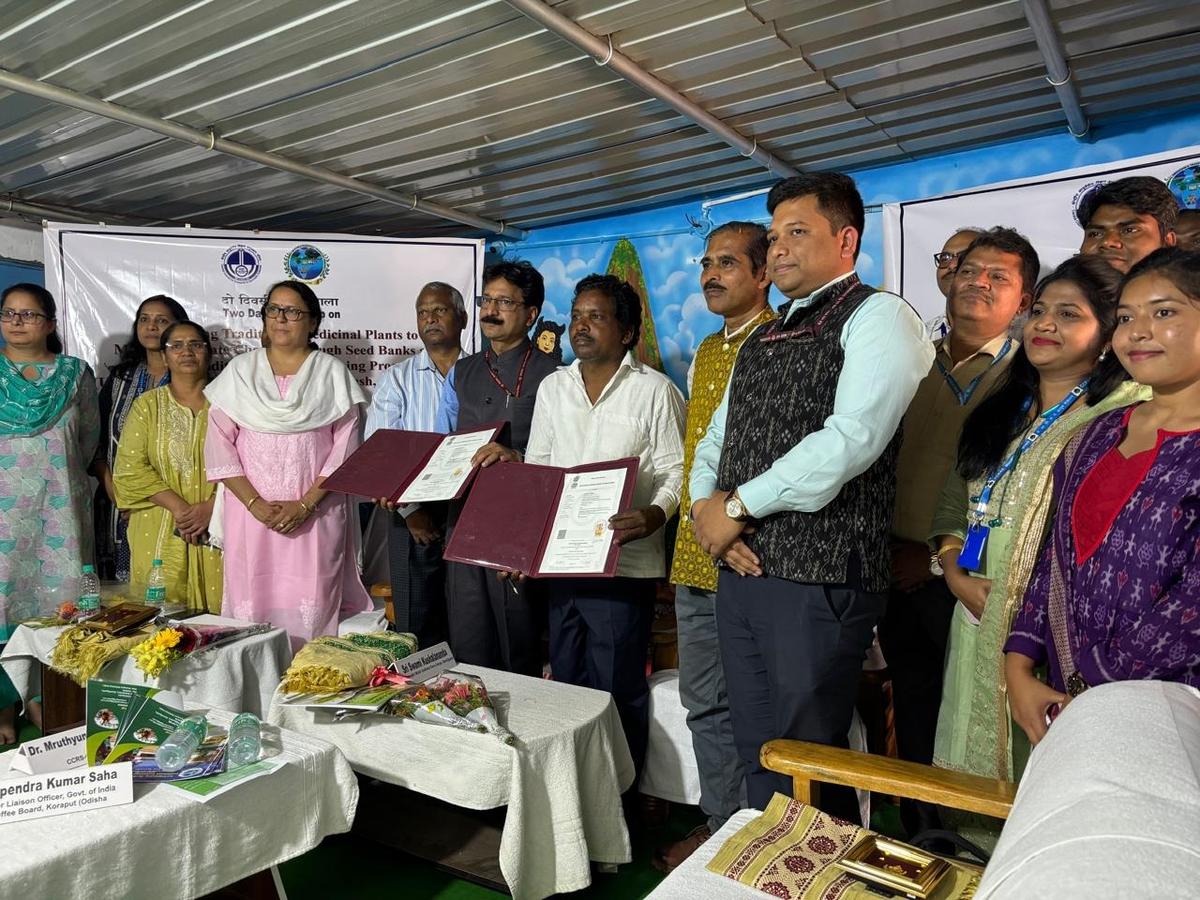Tribal Healer’s Customary Methods Gain Scientific Interest in Rural India
Table of Contents
- Tribal Healer’s Customary Methods Gain Scientific Interest in Rural India
- Frequently Asked Questions
- what is the significance of Hari Pangi’s healing center?
- How has hari Pangi’s traditional knowledge been validated?
- What health conditions are his treatments being explored for?
- How does the community benefit from his traditional practices?
- What modern measures has Mr. Pangi adopted in his practice?
- How are traditional practices integrated with modern scientific inquiry?
- Frequently Asked Questions
Published – February 17, 2025 10:39 am IST

In the quiet foothills of Tentuliguda, a remote village in Odisha’s Koraput district, age-old indigenous wisdom is being showcased in a modest four-room building that functions as both a laboratory and a healing center. For generations, this rural setting has nurtured an understanding of the medicinal properties found in leaves, epidermal tissues, and plant roots—a knowledge base that now attracts notable scientific attention.
At the heart of this traditional practice is Hari Pangi, a tribal healer whose expertise has been passed down through five generations. Recently, his practice became the focus of a formal study when 17 Ayurvedic experts visited his center—including Professor Rabinarayan Acharya, Director General of the Central Council for Research in Ayurvedic Sciences (CCRAS).In a move aimed at preserving and validating these local health traditions, Mr. Pangi signed a non-disclosure agreement with CCRAS under the Ministry of Ayush. This agreement paves the way for an extensive exploration and potential recognition of his treatments for chronic kidney diseases, hypertension, and even cancer.
“Our mandate is too validate the traditional knowledge of tribal healers through a structured process,” said Prof. acharya. “We sign a non-disclosure agreement with them, under which we are bound not to disclose their healing methods. Every formulation and piece of information is critically analysed in a systematic manner.”
— Professor Rabinarayan Acharya,CCRAS
In a parallel that may resonate with U.S. initiatives in community health and option therapies, traditional practices are ofen embraced by communities seeking holistic remedies. As an example, just as grassroots movements in some rural U.S. communities promote the use of herbal supplements and integrative medicine, Mr. Pangi’s methods are being scrutinized with the same rigor.

According to Prof. Acharya,CCRAS is particularly focused on evaluating Mr. Pangi’s traditional treatments. To ensure the methods are effective, an Ayurvedic degree holder will collaborate with the healer for an entire year, closely monitoring patient interactions and verifying claims with a systematic approach. With local patient visits numbering between 25 on weekdays and reaching up to 125 on Sundays, the high level of sustained demand reflects the community’s trust in these ancient formulas.
The initiative is complemented by the activities at the Sri Gupteswar Herbal Medicine and Training Traditional Technology Research Center, Mr.Pangi’s own research institution. Over the past two days, the centre has transformed into a nexus of scientific inquiry, drawing tribal healers from across southern Odisha. These gatherings resemble modern symposia where experts exchange ideas, much like the community health workshops held in parts of the united States to address local healthcare shortages and integrate traditional practices with modern medicine.
During one such workshop organized on Mr. Pangi’s campus, the topic of conserving traditional medicinal plants was at the forefront. The session emphasized the importance of seed banks as a natural hedge against climate change—a subject not unfamiliar to American researchers who advocate for the preservation of biodiversity in landscapes ranging from the Appalachian region to the Pacific Northwest. Many tribal healers also received updated training to further refine their craft.

Prof.Acharya further explained that while many traditional healing practices are well known, any innovative knowledge secured through non-disclosure agreements undergoes a strict process of quality control, safety assessments, clinical trials, and potential patenting.If such patents are granted, a share of the profits will be allocated to the tribal healers themselves. This approach has drawn comparisons to community-based research models seen in U.S. institutions, which aim to both protect and profit from local expertise.
“recently, we secured approval for the commercialisation of Ayush-82, an Ayurvedic formulation developed for the prevention and management of diabetes,” said Prof. Acharya. “We have a defined process for gathering information from tribal healers, which includes details on the number of patients they treat and how many generations their practice has spanned.”
— Professor Rabinarayan Acharya, CCRAS
It is noteworthy that even before gaining the support of CCRAS, mr. Pangi had taken proactive measures to modernize his practice. Despite not having completed his matriculation, he had already hired an Ayurveda degree holder at a monthly salary of ₹24,000 to assist in his work.With the ability to identify over 200 plant species and a repertoire of formulations for more than 100 ailments, Mr.Pangi’s deep-rooted knowledge of medicinal plants mirrors the innovative spirit of local healers working in remote corners of the United States.
Commenting on the broader implications of his work, noted science communicator Laxminarayan Boxi stated, There should be a policy to conserve medicinal plant seeds, roots, and tuber scientifically, so that endangered spices can be utilised for the next generation. We have a specific policy to conserve genetic resources on different crops and animals, and fish resources, but it is indeed high time to come up with an improved policy on medicinal plants in India.
This renewed focus on indigenous treatment protocols not only adds to the global dialog on natural remedies but also invites policymakers and researchers in the United States to reexamine local practices. With increasing interest in holistic and integrative medicine, there is an prospect here to explore innovative partnerships between traditional healers and modern health institutions, much like the collaborations seen in leading medical centers across the country.
As traditional methods and scientific validation continue to intersect, both communities in rural India and health professionals in America may find that these collaborations have far-reaching benefits—a synthesis of time-honored wisdom and modern technology aimed at enhancing public health outcomes.
Frequently Asked Questions
what is the significance of Hari Pangi’s healing center?
Hari Pangi’s center,located in the quiet foothills of Tentuliguda in Odisha’s Koraput district,serves as both a laboratory and a healing center where age-old indigenous wisdom is preserved and practiced. This unique setting has nurtured a deep understanding of the medicinal properties found in leaves, epidermal tissues, and plant roots.
How has hari Pangi’s traditional knowledge been validated?
His traditional methods have attracted scientific interest following a formal study by 17 Ayurvedic experts, including Professor Rabinarayan Acharya of CCRAS. By signing a non-disclosure agreement under the Ministry of Ayush, his healing techniques are undergoing a rigorous process of quality control, safety assessments, and clinical evaluations.
What health conditions are his treatments being explored for?
The research at his center is exploring the potential of his traditional treatments to address chronic kidney diseases, hypertension, and even cancer. Additionally, an Ayurvedic formulation called Ayush-82 has been approved for the prevention and management of diabetes.
How does the community benefit from his traditional practices?
Local patient visits range from 25 on weekdays to up to 125 on Sundays, showcasing the community’s trust in thes ancient formulas. The ongoing scientific inquiry and systematic validation further support the integration of these methods into broader health practices.
What modern measures has Mr. Pangi adopted in his practice?
Despite not having completed his matriculation,Mr. Pangi has modernized his practice by hiring an Ayurveda degree holder for assistance and leveraging his extensive knowledge of over 200 plant species to create a repertoire of formulations for more than 100 ailments.
How are traditional practices integrated with modern scientific inquiry?
The Sri Gupteswar Herbal Medicine and Training Traditional Technology Research Center, Mr. Pangi’s own institution, has become a nexus of scientific inquiry. Workshops and symposia are held to exchange ideas on medicinal plant conservation, with a focus on seed banks and updated training for tribal healers, mirroring initiatives seen in other parts of the world.


